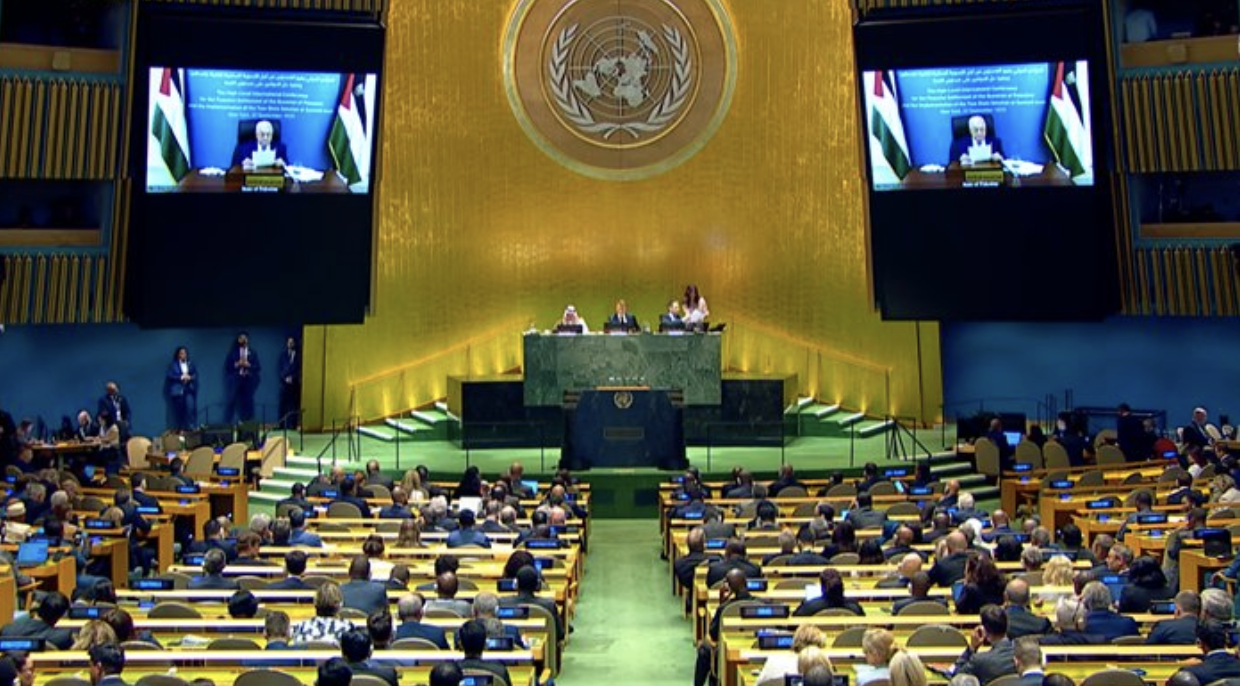Photo via UN News
***
Responsibility to Protect, or R2P, is a globally ratified commitment adopted at the 2005 UN World Summit. It is universally recognized by member states as a tool to prevent and mitigate active or prospective genocide, war crimes, ethnic cleansing, or crimes against humanity. In such pretexts, the international community has a moral duty, and ought to step in. However, this humanitarian ideal could not be further from reality—not from a lack of passion, but from a persistent failure of states to comply and cooperate. This disunity—visible in the Israel-Palestine conflict—is not entirely unfounded, given the UN’s lack of binding military and legal force to undergird a rules-based international order.
If we look back in history to assess the status and consistency of R2P, there are a few objective “success” stories: Liberia in 2003, and Kenya after the post-election violence. R2P, admittedly, delivers lofty speeches and solemn solidarity, but too rarely does it translate into action. You would assume it hasn’t always been this way, but that would be incorrect. The 1994 Rwandan genocide, remembered ubiquitously as one of the most abhorrent events of the 20th century, was neither prevented nor mitigated by the UN. In fact, every UN organization involved, or rather not involved, has shamefully admitted failure to prevent the deaths of approximately 800,000 people.
A similar trend is visible in modern-day Palestine. The reluctance by member states to call the conflict a genocide is motivated by their unwillingness to act. The US, endowed with raw political power, denies the results of fact-finding missions—official investigations to verify serious international law violations—and refuses any semblance of genocidal rhetoric.
No matter how much legitimacy is imbued into R2P, it is rendered toothless by the neglect of the key players at the negotiating table: the 5 permanent members on the United Nations Security Council (UNSC). After all, it takes just one veto to kill a bill referred to the UNSC. Therefore, in order for R2P to do its job, states must assume the responsibility to act. This history is sobering, and even more alarmingly, these inactions have continued into the 21st century. It is, for lack of better words, diplomatically frustrating.
In 2025, there is much talk of ceasefires in the Middle East but little peace. In 2008, Israel imposed strong restrictions on movement, trade, and access in Gaza, effectively reducing the territory to a byproduct of occupation and geopolitical abandonment. By 2022, an estimated 80% of Gazans relied on international aid and third-party intervention to meet basic needs. As a result, Palestine, a developing country, is far more dependent on foreign aid than a hegemonic state would ever be. The prevailing postulation of many officials and legal experts, therefore, runs as follows: What kind of humanitarian intervention is effective in an area with entrenched, protracted social conflicts?
Despite the subjective politics, there is strong legal data indicating genocidal tactics in Palestine. Nonetheless, the absence of a clear, sustained invocation of R2P in response to deliberate famine and death in Gaza signals the doctrine’s insularity.
On September 18, 2025, the UNSC held its 10,000th meeting against the backdrop of proliferating destitution in the besieged enclave as the Israeli offensive encroached on Gaza City. As one of the five permanent members of the UNSC, the United States vetoed any resolution on Gaza for the sixth time. Given that Israel is a key ally to the US, prospects of meaningful conflict resolution in the Middle East will likely remain at an impasse. As a result, R2P cannot be deployed without risking veto by dissenting votes in the Security Council. In many respects, the doctrine has diluted itself into a mere platitude, largely unaccompanied by productive peace negotiations.
One could continue to digress into granular case studies, but the issue at stake remains unchanged: which of the 5 powers on the UNSC are willing to bite the bullet and act despite national interest? More often than not, the answer is none. So, in the context of R2P’s politically ambiguous and inconsistent framework, what promise does that hold for Palestine, if any at all?
***
This article was edited by Annika Trippel and Dysen Morrell.
